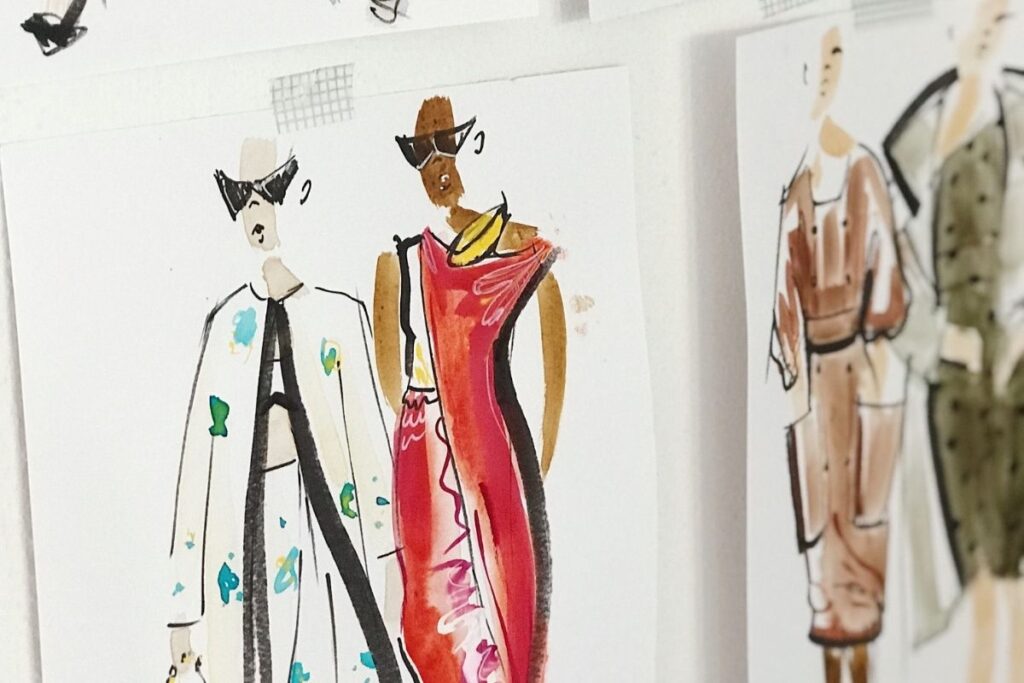The world of fashion is constantly evolving, with trends coming and going faster than we can keep up with. But have you ever wondered how these trends are born and how they have evolved throughout history? Styling history is a fascinating subject that allows us to delve into the past and understand the influences that have shaped the fashion industry as we know it today. From the opulent styles of the Renaissance to the rebellious spirit of the punk movement, let’s take a journey through the ages and explore the rich tapestry of styling history.
Renaissance Fashion
One of the earliest examples of distinctive styling can be traced back to the Renaissance period in Europe. During this time, fashion was seen as a form of self-expression for the wealthy elite. Lavish fabrics, intricate embroidery, and ornate accessories were all used to display wealth and social status. The clothing of this era was highly structured, with corsets and farthingales creating exaggerated silhouettes. The Renaissance saw the birth of fashion as an art form, with designers and tailors gaining recognition for their craftsmanship.
Rococo Fashion and The 18th Century
Moving forward in time, the 18th century brought about a significant shift in fashion. The Rococo period saw a departure from the rigid styles of the Renaissance, with a focus on more flowing and delicate designs. Women’s fashion featured voluminous skirts and intricate details, such as lace and ribbons. Men’s fashion also underwent a transformation, with the introduction of the three-piece suit and powdered wigs. This era was characterized by elegance and refinement, with fashion becoming a way to showcase one’s taste and sophistication.
Industrial Revolution and Victorian-Era Fashion
The 19th century witnessed the rise of industrialization, which had a profound impact on fashion. With the advent of mass production, clothing became more accessible to a wider range of people. The Victorian era, in particular, saw a stark divide between the upper and lower classes in terms of fashion. The upper class continued to embrace elaborate styles, while the working class had to make do with simpler and more practical garments. The Industrial Revolution also led to the emergence of department stores, which revolutionized the way people shopped for clothing.
Changes in 20th Century Fashion
As we entered the 20th century, fashion became increasingly influenced by cultural and societal changes. The 1920s, also known as the Roaring Twenties, saw a dramatic shift in women’s fashion. The flapper style emerged, characterized by dropped waistlines, short hemlines, and a more relaxed silhouette. This era was a reflection of the changing roles of women in society, as they gained more independence and freedom.
Mid-20th Century Iconic Designs
The mid-20th century brought about another fashion revolution with the birth of haute couture and the rise of iconic designers such as Christian Dior and Coco Chanel. The post-World War II era saw a return to opulence and femininity, with Dior’s New Look introducing voluminous skirts and nipped-in waists. Chanel, on the other hand, revolutionized women’s fashion with her simple and elegant designs, popularizing the little black dress and the iconic Chanel suit.
Rise of Subcultures in Fashion
In the latter half of the 20th century, fashion became more democratic and influenced by subcultures and street style. The 1960s saw the emergence of the mod movement, with Mary Quant’s mini skirt becoming a symbol of youth rebellion. The punk movement of the 1970s brought about a radical departure from traditional fashion, with ripped clothing, safety pins, and unconventional hairstyles becoming the norm. These subcultures challenged the status quo and redefined fashion in their own unique way.
Modern Day Fashion Trends
Fast forward to the present day, and fashion continues to evolve at a rapid pace. With the advent of social media and digital platforms, trends can spread like wildfire, reaching a global audience in an instant. Street style and celebrity culture now play a significant role in shaping fashion, with influencers and bloggers setting the trends. Sustainability and ethical fashion have also become important considerations, as consumers become more conscious of the environmental and social impact of their clothing choices.
Learning from Styling History
Styling history is a captivating subject that allows us to understand the cultural, social, and artistic influences that have shaped fashion throughout the ages. By studying the past, we can gain valuable insights into the present and future of the industry. Whether you’re a fashion student, a professional stylist, or simply someone with a passion for fashion, exploring styling history can deepen your understanding and appreciation of this ever-changing art form. So, let’s continue to celebrate and embrace the rich tapestry of fashion’s past as we forge ahead into the future.
Conclusion
To further your knowledge and pursue a career in fashion styling, consider enrolling in reputable educational programs such as those offered by New York University (NYU), NYU Tisch, Parsons School of Design, Parsons, The New School, Fashion Institute of Technology (FIT), or Fashion Institute of Design & Merchandising (FIDM). Additionally, online courses like those offered by Yellowbrick can provide valuable insights and skills to kickstart your journey in the world of fashion styling.
Key Takeaways:
- Styling history allows us to understand the influences that have shaped the fashion industry throughout time.
- From the opulent styles of the Renaissance to the rebellious spirit of the punk movement, fashion has evolved and reflected societal changes.
- The 20th century brought about fashion revolutions with iconic designers like Dior and Chanel, while the present day is influenced by social media and sustainability.
- Studying styling history can deepen your understanding and appreciation of fashion as an art form.
- Consider enrolling in reputable educational programs or online courses, such as the FIT Fashion Styling Foundations program offered by Yellowbrick, to further your knowledge and pursue a career in fashion styling.
By delving into the rich tapestry of styling history, we can gain valuable insights into the cultural, social, and artistic influences that have shaped the fashion industry. Whether you’re a fashion student, a professional stylist, or simply someone with a passion for fashion, understanding the evolution of fashion trends throughout history can enhance your skills and knowledge in this ever-changing field.
To take your journey in fashion styling to the next level, consider enrolling in the FIT Fashion Styling Foundations online course and certificate program offered by Yellowbrick. This comprehensive program will provide you with the necessary skills and expertise to excel in the world of fashion styling. So, embrace the past, celebrate the present, and step confidently into the future of fashion styling.




